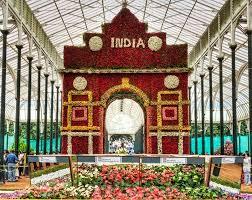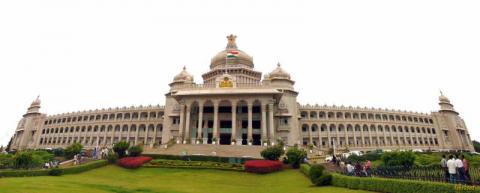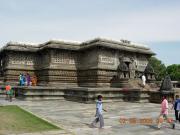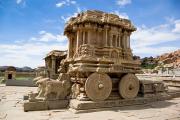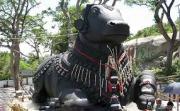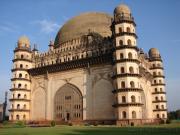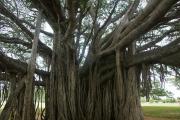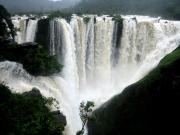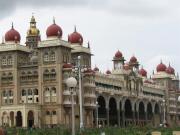Bangalore or Bengaluru is the capital city of the Indian state of Karnataka. Located on the Deccan Plateau in the south-eastern part of Karnataka, Bangalore is India’s third most populous city and fifth-most populous urban agglomeration. Bangalore is well known as the hub of India’s information technology sector. The city is amongst the top 10 preferred entrepreneurial locations in the world.
A succession of South Indian dynasties ruled the region of Bangalore until in 1537 CE, Kempé Gowdā — a feudatory ruler under the Vijayanagara Empire — established a mud fort considered to be the foundation of modern Bangalore. Following transitory occupation by the Marāthās and Mughals, the city remained under the Mysore kingdom, which is now a part of the Indian state of Karnataka. Bangalore continued to be a cantonment of the British and a major city of the Princely State of Mysore which existed as a nominally sovereign entity of the British Raj. Following the independence of India in 1947, Bangalore became the capital of Mysore state, and remained capital when the new Indian state of Karnataka was formed in 1956. With a Gross domestic product of US$83 billion, Bangalore is listed 4th among the top 15 cities contributing to India’s overall GDP.
Bangalore is home to many well-recognised educational and research institutions in India. Numerous public sector heavy industries, technology companies, aerospace, telecommunications, and defence organisations are located in the city. Bangalore is known as the Silicon Valley of India because of its position as the nation’s leading IT exporter. A demographically diverse city, Bangalore is a major economic and cultural hub and the second-fastest growing major metropolis in India.
The city celebrates its oldest festival, “Karaga Shaktyotsava” or Bangalore Karaga.[108] Deepavali, the “Festival of Lights”, transcends demographic and religious lines and is an important festival, along with the nine nights of Navratri. Other traditional Indian festivals such as Ganesh Chaturthi, Ugadi/Gudi Padwa, Sankranthi, Eid ul-Fitr, and Christmas are also celebrated.
Bangalore is home to the Kannada film industry, which churns out about 80 Kannada movies each year. Bangalore also has a very active and vibrant theatre culture with popular theatres being Ravindra Kalakshetra and the more recently opened Ranga Shankara. The city has a vibrant English and foreign language theatre scene with places like Ranga Shankara and Chowdiah Memorial Hall leading the way in hosting performances leading to the establishment of the Amateur film industry. The diversity of cuisine is also reflective of the social and economic diversity of Bangalore. Bangalore has a wide and varied mix of restaurant types and cuisines and Bangaloreans deem eating out as an intrinsic part of their culture. Roadside vendors, tea stalls, and South Indian, North Indian, Chinese and Western fast food are all very popular in the city. Udupi restaurants are very popular and serve predominantly vegetarian, regional cuisine.
Attractions
Parks
LalBagh
LalBagh is a botanical garden, commissioned by the Hyder Ali in 1760. The 240-acre (0.97 km2) park is home to over 1000 species of flora and a Glass House. The park is known for its annual flower show. The garden surrounds one of the towers erected by the founder of Bangalore, Kempe Gowda I. The Lal Bagh Rock, dates back to 3000 million years, is another attraction.
|
|
|
Cubbon Park
Cubbon Park is located in the heart of the city and spreads over 300 acres (1.2 km2). The park was created in 1884, by Major General Richard Sankey. The park is home to numerous trees and plants that span over 68 general and 96 species. The park is also known for its kids train.
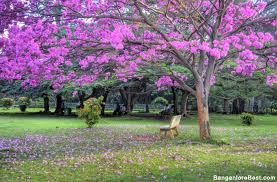 | 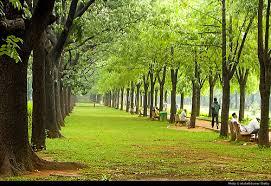 | 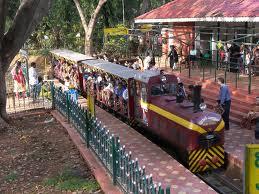 |
Historical monuments
Bangalore Fort
Bangalore Fort originally built by Kempegowda in 1537 A D. It is located next to the Victoria Hospital Gate in the K.R Market area.
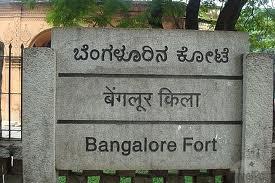 | 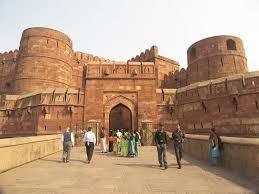 |
Tipu Sultan’s Summer Palace
Tipu Sultan's Summer Palace was built in 1791, is a two-storied ornate wooden structure with exquisitely carved pillars, arches and balconies. It houses a museum that contains artifacts relating to the Hyder-Tipu regime.
 | 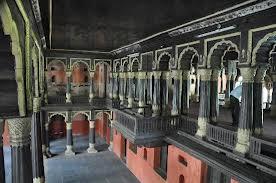 |
Bangalore Palace
Banaglore Palace (1862) is located near Mekhri Circle and Cantonment Railway station and is built to look like a smaller replica of the Windsor Castle in England.
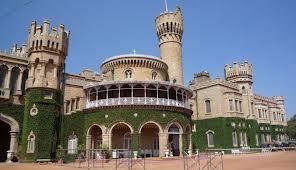
Mayo Hall was designed in memory of the Lord Mayo and is regarded as one of the finest designs of British architecture.
Government Buildings
Vidhana Soudha is the seat of the state legislature of Karnataka. It is an imposing granite building, built in 1956 in the ‘Neo-Dravidian’ style, incorporates elements of Indo-Saracenic, Rajasthani Jharokha and Dravidian styles. Vidhana Soudha is the brainchild of Kengal Hanumanthaiah and built by chief engineer B.R. Manickam.
Attara Kacheri, (Karnataka High Court), overlooks Vidhana Sabha. It is a red brick and stone building in the Greco-Roman style of architecture. It houses the High Court for the state of Karnataka.
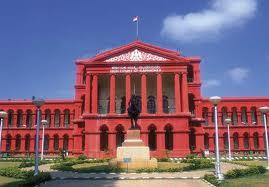
Museums & Galleries
- Government Museum was established in 1865 has a rare collection of archaeological and geological artifacts including old jewellery, sculpture, coins and inscriptions. The museum is also home to the Halmidi inscription, the earliest Kannada inscription ever found (450 AD).
- Kempegowda Museum is dedicated to Yelahanka chieftain Kempegowda (1513-1569) who is the founder of Bangalore city. The museum is located on the first floor of Mayo Hall. The museum has Kempegowda’s statue as well as posters and pictures of forts, temples, reservoirs and inscriptions from his time.
- Karnataka Folk Museum is located in a 15 acre campus at Kumara Park West has an excellent collection of Folk puppets, costumes, utensils, instruments, weapons and masks. folk music collections and dance videotapes.
- Gandhi Bhavan established in 1965 at Kumarapark is showcase of Mahatma Gandhi’s life. It houses a photo gallery, his letters, a library and audio visuals.
- HAL Aerospace Museum showcases the growth of the Indian aviation industry and HAL for six decades. The Museum is maintained by HAL (one of Asia’s largest Aerospace companies). The museum houses displays of various aircraft and helicopters, Aircraft engine models, Flight simulators, a mock Air Traffic Control Tower and exhibit of Indian aviation history.
- Madras Sappers Museum & Archives, inaugurated in 1979, showcases the history of the Madras Engineer Group (called the Sappers, established in 1803). The Madras Sappers are the oldest regiment of the Corps of Engineers of the Indian Army. The museum chronicles their history and achievements and houses armoury used by the regiment, medals, their attire and a sports gallery.
- Visvesvaraya Industrial and Technological Museum was instituted as part of the centenary celebrations of the engineer-statesman Sir M. Visvesvaraya (1861–1962) at Kasturba Road.
- NIMHANS Brain Museum showcases the human brain and its functions. It is located at National Institute of Mental Health and Neurosciences (NIMHANS) and is run by its department of neuropathology. The Museum seeks to help visitors see the brain, understand how it works and get an insight into the kind of diseases that can affect it. The museum has a diverse collection of over 600 brain samples and is the result of over 30 years of research. The Museum is open to the public on Saturdays from 10 a.m to 3 p.m.
- Philatelic Museum is located at the first floor of the Bangalore General Post Office near Vidhana Soudha.
- Law Museum is a museum (established in 2006) dedicated to the legal profession. It was the brainchild of Karnataka High Court Chief justice Cyriac Joseph. The museum houses an original print of the Constitution of India, articles and documents related to the legal profession, seals, insignia and books. It also showcases the history of the High Court and the development of courts over the ages.
- Jawaharlal Nehru Planetarium is one of the five Planetariums named after India’s first prime minister. It was founded by Bangalore City Corporation in 1989.
- National Gallery of Modern Art is an art gallery was inaugurated in the year 2009. It showcases modern Indian art and houses paintings by Raja Ravi Verma, Jamini Roy, Amrita Sher-Gil, Rabindranath Tagore and a large number of Modern and Contemporary artists. NGMA also organizes art walks.

